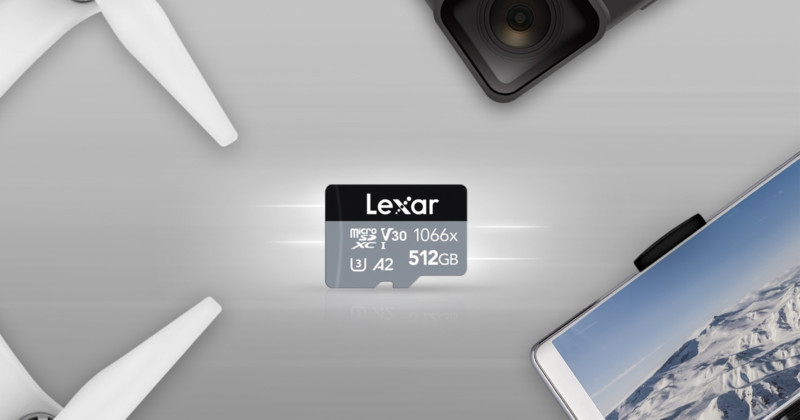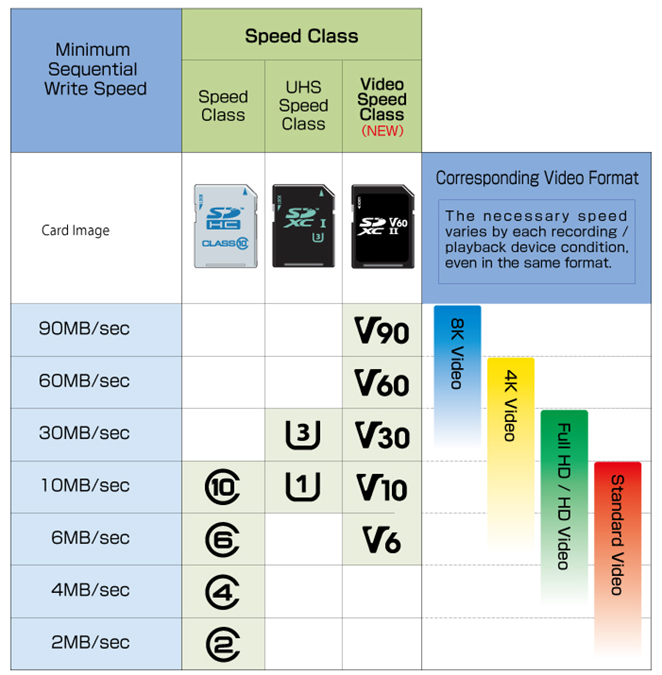
Lexar, now owned by Longsys, has announced a new microSD memory card that is not only very affordable but also states 120 MB/s write and 160 MB/s read speeds despite only being UHS-I.
The SD association rates cards in several categories based on their performance. UHS-I cards, for example, are only rated to hit 104 MB/s at their highest output according to the organization’s website. UHS-II, which is the more common card format photographers and videographers are currently using, has a minimum speed of 156 MB/s. UHS-II cards achieve this faster spec because they utilize two lanes of pins – often one dedicated to write and one dedicated to read – as opposed to UHS-I cards using one lane for both activities.
That is why these new cards, the Lexar Professional 1066x microSDHC/microSDXC Silver Series, are a bit of a head-scratcher. Lexar is promising 120 MB/s write and 160 MB/s read speeds, exceeding the fastest that UHS-I cards should achieve despite only having that one lane of pins to work with. Is that impressive, or misleading? Well, it’s actually both.



Doing a bit of a deeper dive, we can see that it’s unlikely these cards can maintain that high data speed: the card is only rated as V30. The terms UHS and Video Speed Class (V) are used by the SD Association to add clarity to a company’s speed claims. While Lexar seems to be defying the UHS-I rules we can glean more from the other card ratings. V30 only promises that the card can maintain a write speed of 30 MB/s, and while this is generally fast enough for low bitrate 4K video even up to 60 frames per second – like you would find on many smartphones and most consumer-level drones – it is far below the 120 MB/s that the company would lead you to believe its new card is capable of.
The other symbol on the card denotes U3, another rating that only guarantees 30 MB/s speeds. That spec as well as the Class 10 moniker don’t have a higher ceiling, unfortunately. Even though U3 only denotes 30 MB/s and Class 10 denotes 10 MB/s sequential writing and we know cards can get faster than that, the SD Association hasn’t released any designation for cards that exceed those marks. As a result, calling a card U3 or Class 10 can be misleading to a consumer if they don’t realize what those mean.



Still, if these cards can even occasionally hit 120 MB/s write speeds, it is actually impressive given the single-lane design and that no UHS-I card should get that fast.
Because they are UHS-I, they have the advantage of being extremely affordable for the storage capacity. Lexar has stated pricing for the cards to be $19.99 for 64 GB, $34.99 for 128 GB, and $59.99 256 GB. The company will also release versions of this card at 32 GB and 512 GB at a later date.
If you’re considering these new cards based on Lexar’s quoted 120 MB/s write speeds and low asking price, just know that they won’t be able to consistently hit more than a quarter of the speeds promised on the box. While they might spike in write speeds and occasionally get that fast, in real-world use you’re unlikely to see any tangible benefit and you should use these cards with the expectation of 30 MB/s write speeds. If you’re just planning to take photos in low drive modes or on your cell phone, or if you only plan to shoot in Full HD, these cards will work great. But if you need greater consistency like what is expected out of V60 or V90 cards, which is what is commonly seen as the baseline for high-quality 4K and 6K capture, you should look elsewhere.